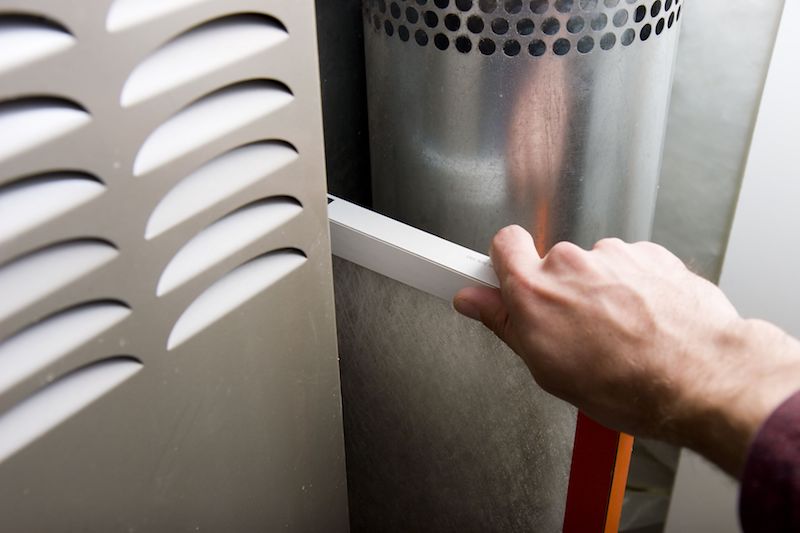
If you’re uncertain whether your Hasbrouck Heights house has unhealthy indoor air quality (IAQ), it probably does.
We are indoors a lot. In reality, we’re in a building up to 90% of the time, according to the U.S. Environmental Protection Agency. And the air inside homes could be 2–5 times more contaminated than outdoors, which could create long-term health concerns.
Most Common Origins of Bad IAQ
We’ve made a list of the most frequent causes of inferior IAQ, the problems they create and how you can fix these indoor air pollutants. If you’re troubled by the air inside your residence, we suggest chatting with a specialist like ACE Solutions about which options are ideal for your home.
Volatile Organic Compounds
Volatile organic compounds, or VOCs, are chemicals emitted from everyday household items.
They’re found in paint and stains as well as:
- Furniture
- Carpet
- Building materials
- Cleaning products
- Cosmetics
- Air fresheners
- Candles
When these fumes accumulate inside, they might irritate your eyes, nose and throat. They can also result in headaches and nausea. Regardless of whether your home is in a rural or industrial space, an EPA study found indoor levels of these fumes can be 2–5 times higher than the air outside your home.
Always follow the manufacturer’s instructions when painting or cleaning. Unlatching a window can help fumes dissipate faster.
Air purification systems can also help. This equipment partners with your heating and cooling unit to clean indoor air. When hunting for a model, ensure it’s specifically made to eliminate VOCs.
Dust and Pet Dander
Dust and pet dander can trigger health problems like asthma and allergies, especially when it continuously gets redistributed by your home’s comfort equipment. While you can vacuum more regularly and buy an improved air filter, an air filtration system could be a better fit.
This solution hooks to your HVAC equipment to give powerful filtration. Some models provide hospital-level filtration for eliminating particles and bioaerosols.
Lingering Odors
New residences are securely sealed to enhance energy efficiency. While this is great for your utility bill, it’s not ideal for your IAQ.
Stuffy odors can stay around for a greater amount of time as your home is pulling in reduced fresh air. Since keeping your windows open all the time isn’t an option, here are two approaches you can make your indoor air smell cleaner.
An air purification system is placed in your HVAC system to eliminate odors before they are redistributed. Search for one with a carbon filter and the capability to wipe out damaging VOCs. This equipment can also help keep your family healthy by wiping out most bacteria and ordinary allergy triggers like pollen and mold spores.
A ventilation system pulls out stale indoor air and substitutes it with crisp outdoor air. There are two types of units (heat recovery and energy recovery), so call our professionals for more info on which kind is best for your home.
Uneven Humidity
It’s critical your residence’s humidity stays even. Air that’s too moist can lead to mold, while dry air can lead to respiratory symptoms.
Our specialists suggest 40–50% for ideal comfort. To keep yours steady, think about getting a whole-home humidifier or whole-home dehumidifier with your HVAC system.
Instead of having to lug a humidifier from room to room, this solution delivers consistent humidity around your house.
Carbon Monoxide
Carbon monoxide is colorless gas you can’t smell. It’s caused by insufficient combustion in fuel-burning units, like gas heating systems, water heaters or fireplaces.
It causes an extreme health risk. In little levels, it can create flu-like symptoms like headaches and nausea. It could be lethal in heavy amounts.
We advise regular furnace maintenance to ensure your system is operating like it should. This service allows our techs to discover troubles before they get bigger, including malfunctions that can cause carbon monoxide leaks.
The best method to keep your house free of carbon monoxide is to install detectors. These alarms need to be on each floor close to bedrooms and living rooms.
Enhance Your House’s Air Quality with the ACE Solutions Specialists
Aware that your house has poor air quality but not sure how to enhance it? Or unsure which product is best for you? Give our kind HVAC specialists a call at 201-426-0650 or contact us online right away. With free estimates and professional support, we’ll help you find the right equipment for your family and budget.
